“I came to the realization that my home had been attacked,” says NY-based photographer Howard Weiss about the moment he understood the full impact of the 9/11 attacks. Struggling to fully comprehend the events that just took place, he realized he needed to document them for better understanding. Taking pictures of the aftermath helped Howard better absorb reality and connect with fellow Americans.
Subscribers get some sweet perks and are automatically entered into contests!. Download our app for iOS, iPad, and Android and get no banner ads for $24.99/year.
Words still fail me when I recollect what happened on 9/11, even though I was thousands of miles away. In the days that followed, I kept in touch with my American friends as much as possible, and their sorrow was heartbreaking. The nation and its people rose from the proverbial ashes with resilience, and I fully realized the intensity of their unwavering spirit when I visited the National September 11 Memorial site thirteen years later. It is a spirit Howard Weiss observed firsthand in the days following the tragedy.
The Essential Photo Gear Used By Howard Weiss
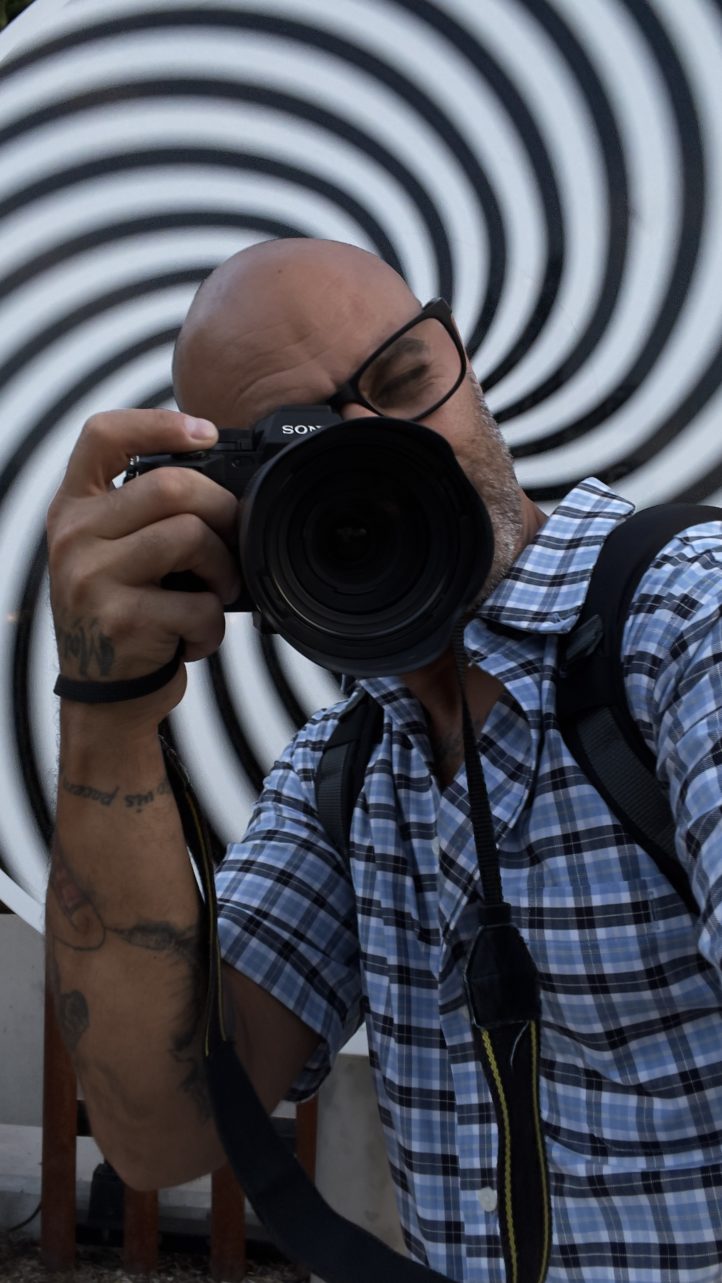
Howard told us:
I still have my everyday camera from those days which was a Minolta Supreme Freedom zoom ex date. I preferred working with 110 film. At the time, I worked in a photo store, so I had to opportunity to develop everything I shot. I was just starting to explore digital camera options. I bought the Logitech Quickcam Traveler for portrait shots because the process of taking a photo using a film camera, developing it, and then scanning it to my computer took a lifetime.
The Phoblographer: Hi Howard. Please tell us about yourself and how you got into photography.
Howard Weiss: Well, I grew up with my grandfather, who always had lots of photography equipment around. He also had handheld movie cameras, as well as a projector and a screen. Unfortunately, at the time, there was nobody around to teach me how to use real technical equipment, but photography just came naturally to me. The physical act of holding something in your hand and taking a picture was very appealing.
In addition, there were always lots of photo albums around to look through, and whenever there were guests over, everyone would gather around and describe where they were and what they were feeling when the picture was taken. I was always intrigued by how one photograph could retrieve so many memories and feelings.
I loved the idea of being able to capture a moment in time back then and to this day.
The Phoblographer: Where were you on the morning of 9/11?
Howard Weiss: The morning of 9/11, I had just gotten to college (which was located in Bensonhurst, Brooklyn) when I saw everyone standing outside looking towards Manhattan. When I looked in that direction, I saw a huge cloud of smoke. My thoughts were that there must be some sort of fire, but I only had 10 more minutes to get to class and get settled in, so I went inside. However, I couldn’t shake the thought of what must be happening. I had my Walkman with me, and I heard on the news that a small plane had struck one of the towers at the World Trade Center. Sitting at my desk, I had a hard time believing that this was the whole story due to the amount of smoke that was starting to fill up the sky. It was just too much smoke for what was being reported. My professor told me to take my headphones off, but I refused, and shortly after, it was reported that another plane had hit the other tower.
I immediately left my classroom to go look outside and see what was happening because, at that point, I felt in my heart that there was an attack on the towers. I still remember vividly where I was when I heard about the first attack on the trade center in 1993, and the feeling that I had in the pit of my stomach was very reminiscent of that time.
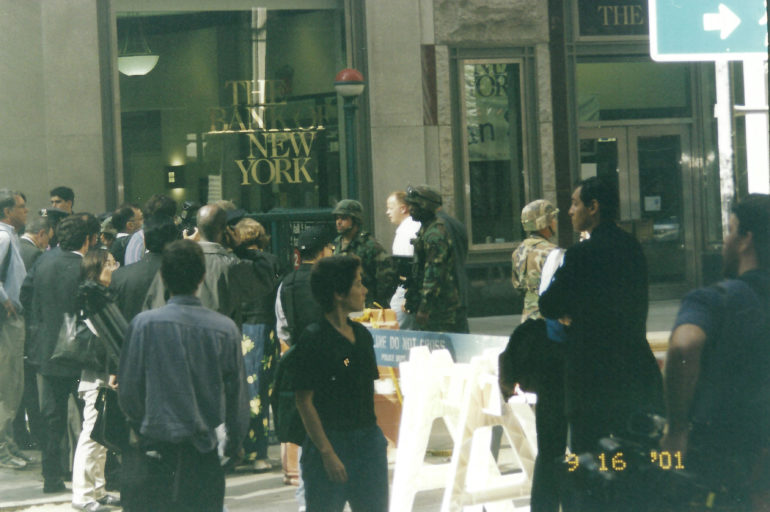
The Phoblographer: It couldn’t have been anything less than tragic for any American during that time. Tell us what memories you have of that day.
Howard Weiss: I can remember the details of that day as if it happened yesterday. After the second plane hit, I started to describe what was happening to the other students in class and my professor made me put my Walkman away. During that time, I had a pager that reported the news, so even though my Walkman privileges were taken away, I was able to see CNN’s breaking news reports. After about 20 minutes, I received an alert that the Pentagon was struck by a plane. After that, I knew that there was much more to come. So I went to my professor and told him that people needed to get home. Everybody in the classroom started looking around, trying to figure out what they should do next. About 10 minutes later, there was an alert over the intercom system telling everybody that school had been canceled for the day and that everybody should leave the building and get home immediately. Thankfully at that time, I was only 20 minutes away from my house, so I got home quickly and turned on the news.
I was trying to wrap my head around what was happening and what the country would be going through in the days to follow. I reached out to as many of my friends as possible to make sure that they were okay. At the time, I had a Radio Shack police scanner, so people were reaching out to me to give them as much information as possible. My girlfriend’s cousin went to Stuyvesant High School, which is just a few blocks away from where the towers once stood, and her parents couldn’t get any information on what was happening with the students due to the huge strain on the phone system. Listening to the police scanner and finding out where the children were being moved to was one of the hardest things I ever had to hear because it confirmed that the first tower was down, an incomprehensible notion.
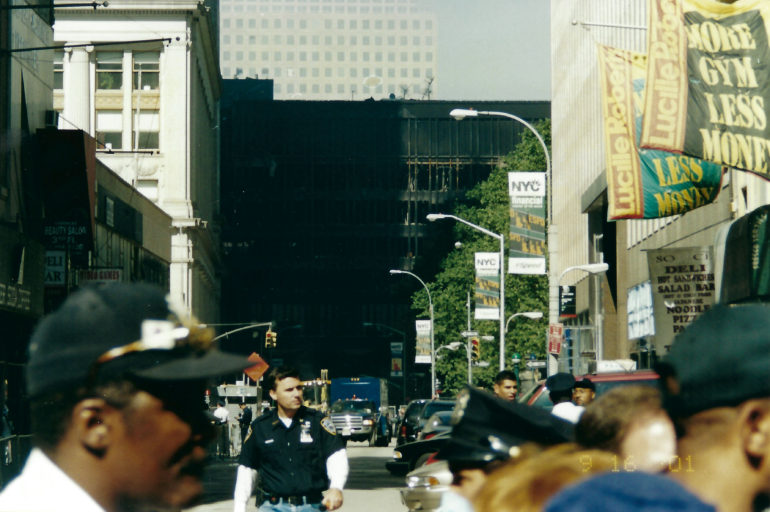
When I took them, I immediately felt that these images should be preserved for future generations so that they could see what really occurred that day.
The Phoblographer: The city was still picking itself up off its feet for weeks after. What made you head out with your camera just a few days after the tragedy?
Howard Weiss: So I was trying to absorb the events that had unfolded over the days that followed, and between work and school, I recognized that with each night that passed, I was losing the opportunity to understand what was happening. When I heard from my next-door neighbor that her mother was never coming home, I made the decision to blow off my job and go down to the site of the wreckage so I could see for myself the events of the past few days. I grabbed my camera and my new Logitech Quickcam camera and attempted to get as close as I could to the site. Luckily, I was able to walk around the perimeter of the fenced-in site of the tragedy until I found an opening that I was able to sneak into and capture the images that I got.
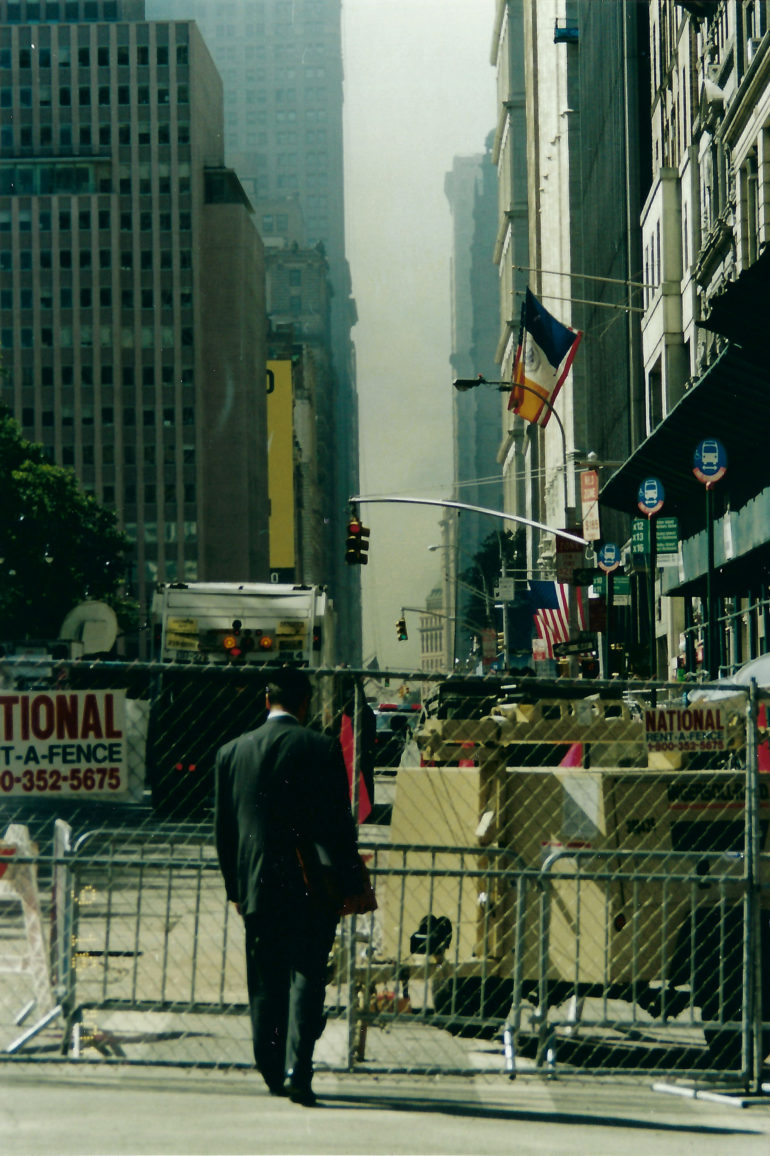
The Phoblographer: What were some of the more poignant observations you saw on the streets?
Howard Weiss: What really struck home for me were the images of the United States army securing lower Manhattan and the photos that I unfortunately lost from my digital camera, where the emergency vehicles had been crushed by the rubble that came down from the towers. Even though the pictures are lost, the images are ingrained in my mind forever. When I took them, I immediately felt that these images should be preserved for future generations so that they could see what really occurred that day. Another lasting image is of all the major fast food restaurants providing food to the people working at ground zero, everyone pitching in and doing their part. That’s when the word ground zero, as a combination of words, hit home, and I came to the realization that my home had been attacked.
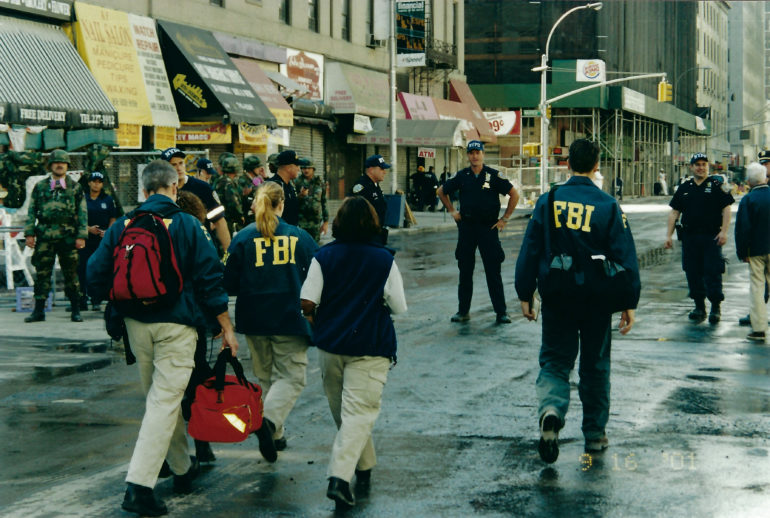
The Phoblographer: Some scenes would have been happier than others: scenes that gave you hope. Which were your most memorable?
Howard Weiss: What gave me hope was seeing the community of New Yorkers come together. Seeing everyone pitch in made me realize that what happened was so much bigger than one single person and that we were much stronger as a collective than we were individually. At this point, the mission was to rescue anyone that might still be alive and to uncover the bodies of the deceased so that their families could have some peace. As a city, we were all feeling the same things, those of us who were directly affected by the incident, as those of us, like me, who just bore witness to the tragedy.
Another thing that was memorable to me was seeing how the emergency workers saved each piece that was pulled from the wreckage in order to figure out exactly how the towers fell.
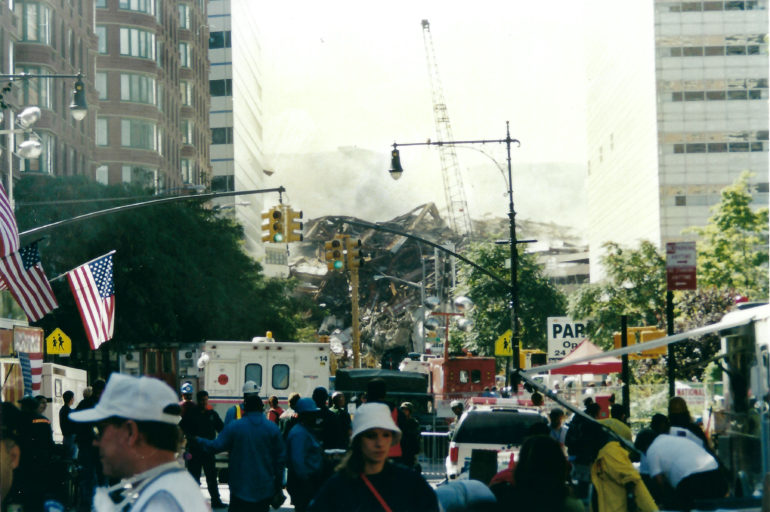
The Phoblographer: Seeing it in person would have been more impactful than any TV broadcast. What perspectives were changed or reinforced when you did this?
Howard Weiss: Even though I logged an unfathomable number of hours watching the coverage from ground zero, physically being at the epicenter is really what put things in perspective for me. There were so many fire trucks, police cars, and other emergency vehicles that were unrecognizable. I saw with my own eyes how many of the brave people who went down to help probably did not make it out alive.
What I did not realize at the time that I took the pictures was how far away I was from where the towers once stood (this was as close as I could get, and I was grateful to be there). From time to time, I go back to where I stood that day, and I feel satisfied with the knowledge that I was a witness to history. Being down there and seeing how everyone pulled together reassured me that as a nation, we would eventually be able to heal rather than be destroyed by this horrific tragedy.
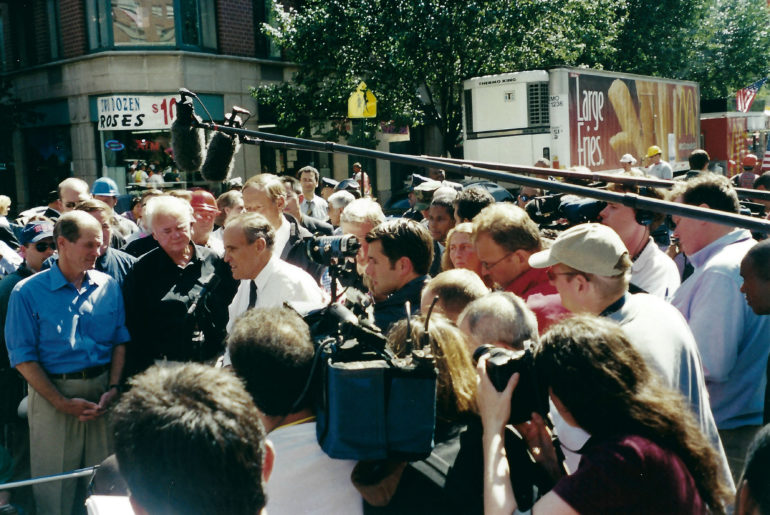
The Phoblographer: You mentioned you’ve lost some images that you shot from that time. What sort of images were those?
Howard Weiss: The images that really haunt me, even to this day, were the ones of the many emergency vehicles that were completely crushed by the fallen towers and the shots of the thick soot of ash that covered all the windows of the buildings and cars. But the one that haunts me the most is of a firetruck that was pulled from the wreckage and put on the street. Seeing the shape that it was in, I just knew that there couldn’t have been any survivors.
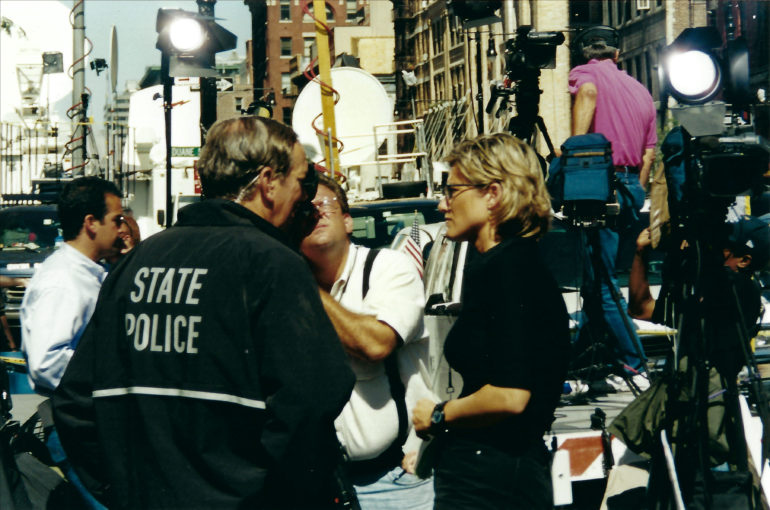
The Phoblographer: If you had to describe Americans after 9/11 in one word, what would it be?
Howard Weiss: Patriotic. Prior to the events of 9/11 the only places that you would find a flag were by government buildings and a hand full of homes here and there (I am speaking from my point of view of NYC). There was a huge spark that followed afterward that if your pledge was not to the allegiance of your country then you were seen as un-American (whatever that meant). That spirit has continued 21 years later as I find it hard not to find a version of old glory as a sticker on a vehicle, a utility pole, on a tee-shirt, and so on.
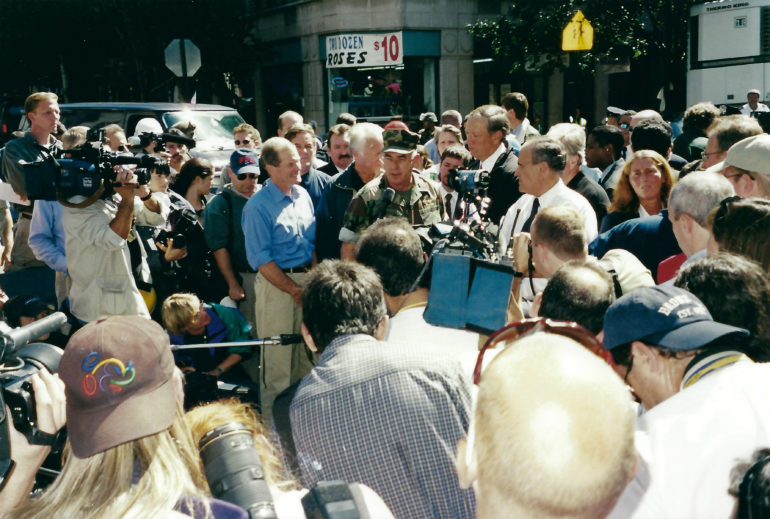
All images by Howard Weiss. Used with permission. Check out his Instagram page to see more of his photography.
Want your work to be featured? Click here to see how.


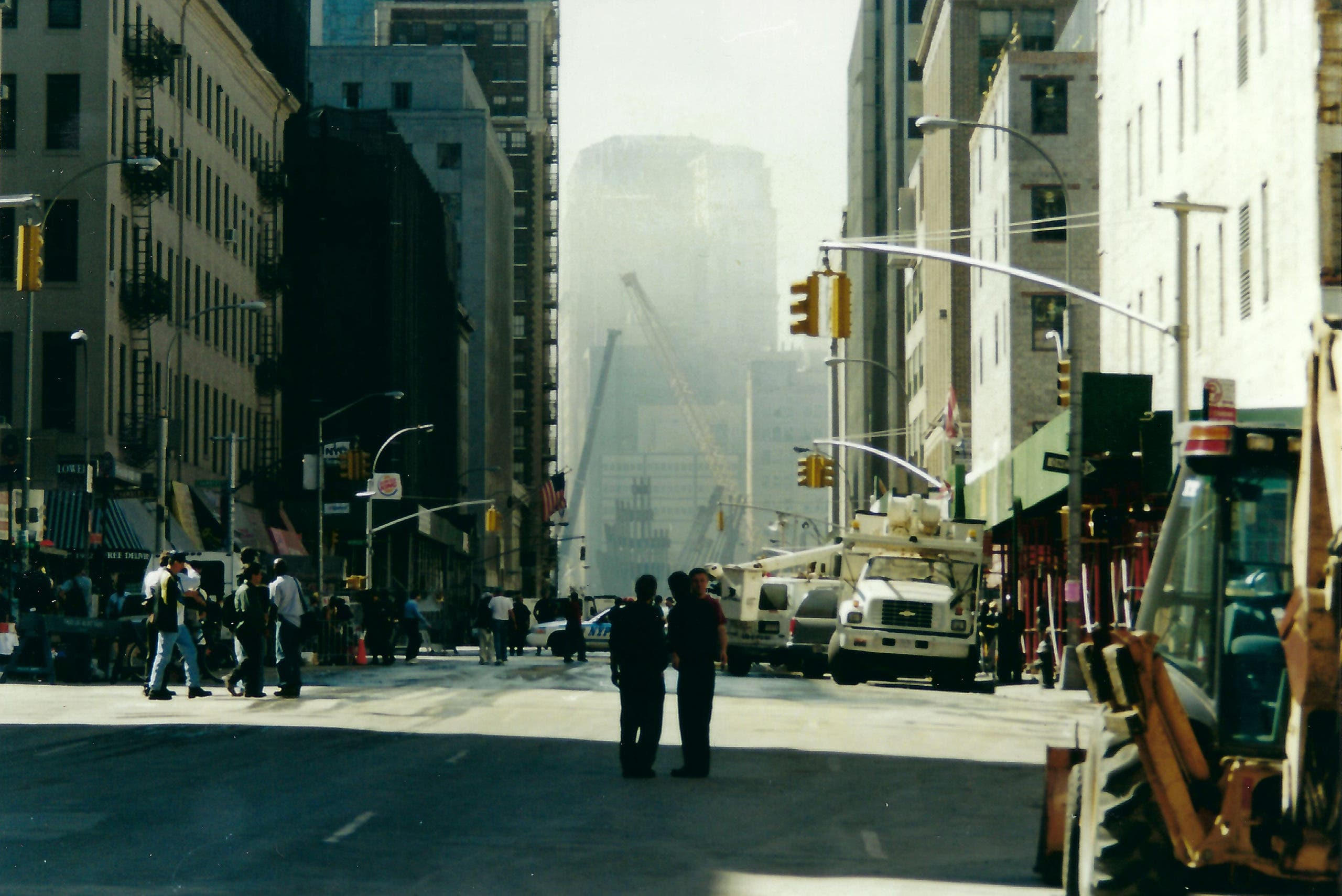
Leave a Reply